marijuana growing
Harness Rainwater for Sustainable Cannabis Cultivation at Home
Published
1 year agoon
By
admin
As the world grapples with climate change and resource scarcity, a growing awareness has emerged around sustainable practices, especially in the area of cultivation. Green thumb enthusiasts, amateur horticulturists, and professional growers are all actively seeking environmentally-friendly methods to nourish their plants. Our focus for today’s discourse, however, pertains to a particular plant that’s stirred much debate and interest – cannabis.
In the burgeoning field of cannabis cultivation, we emphasize a resource that’s abundantly available, yet often overlooked – rainwater. This valuable, natural element holds immense potential in our cultivation practices, primarily due to its compatibility with the unique needs of cannabis plants. This comprehensive guide explores the multifaceted benefits of rainwater for cannabis irrigation, offering a deep dive into its inherent properties and significance.
Furthermore, it serves as a hands-on manual, outlining actionable tips and tricks to aid you in establishing an effective rainwater harvesting system. The aim here is not merely to inform but to equip you with the tools and knowledge needed for a self-sustained, eco-friendly cannabis cultivation journey right at home. It’s a testament to the harmony we can achieve between nature’s gifts and our cultivation practices.
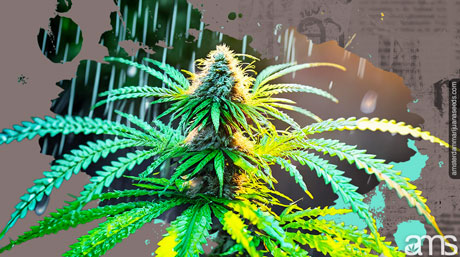
Why Rainwater is the Best for Cannabis Cultivation
The assertion that rainwater is the optimum choice for cannabis cultivation derives its strength from various factors, central of which is rainwater’s inherent softness. This feature refers to its significantly lower mineral content compared to the relatively ‘hard’ tap water. It might seem counterintuitive – after all, aren’t minerals good for plants? However, when it comes to cannabis cultivation, this softness is indeed beneficial.
Cannabis plants, like many other flora, possess a symbiotic relationship with a category of fungi known as mycorrhizae. These mycorrhizae colonize the plant roots, facilitating improved nutrient and water uptake while protecting the roots from harmful pathogens. The softness of rainwater allows it to be easily absorbed by these fungal networks, thereby optimizing nutrient delivery to cannabis plants. This absorption efficiency promotes superior growth, enhancing the overall health and yield of the cannabis crop.
Rainwater also has a neutral pH level, a key factor in successful cannabis cultivation. Cannabis plants thrive in a slightly acidic to neutral pH range, around 6.0 to 7.0. Rainwater typically falls within this range, providing an optimal environment for nutrient absorption. It helps in the availability of vital nutrients like nitrogen, phosphorus, and potassium, thus encouraging healthier, more robust growth.
Using rainwater also brings us one step closer to sustainable cannabis cultivation. It allows growers to lower their dependence on municipal water supplies, many of which are treated with chemicals such as chlorine and chloramines that may be detrimental to the beneficial microbial life within the soil. This sustainability angle not only benefits the environment by conserving water but also leads to a cultivation method that aligns with nature’s rhythm, providing a naturally superior quality crop.
Setting Up Your Rainwater Collection System
As we embark on the journey of rainwater collection, the DIY approach opens up an exciting opportunity to create a system that aligns with your specific requirements and constraints. This process involves a few crucial steps, from selecting an ideal collection system to installing it correctly and ensuring its maintenance.
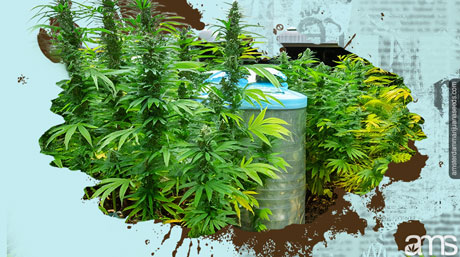
Choosing a Collection System: Picking the right container to collect rainwater is the first crucial step. Commercial rain barrels are readily available in various sizes and designs, fitting different budget ranges and aesthetic preferences. They typically come with built-in spigots, lids, and overflow mechanisms, making them a convenient choice for beginners. On the other hand, repurposing food-grade containers can be a cost-effective and eco-friendly alternative. Make sure your chosen container is sturdy, opaque (to prevent algae growth), and non-toxic. Remember to fit it with a secure lid to prevent debris and insect contamination and an overflow valve to deal with excess water.
Installation: Proper placement of your rain barrel is critical for effective collection. Locate it under a downspout that drains a large portion of your roof to maximize the capture of rainwater. Consider adding a diverter to the downspout, which directs water to the barrel when it’s raining and routes it away when it’s full. The base of your barrel should be stable and elevated – not only does this make accessing the spigot easier but it also increases water pressure, facilitating better flow when you’re irrigating your cannabis plants.
Water Treatment: While rainwater is typically clean, it can pick up pollutants as it travels down your roof, particularly if you live in an urban area with higher air pollution levels. To address this, consider adding a pre-filtration system. A simple method is using a screen mesh to filter out larger debris like leaves and twigs. For finer filtration, a roof washer system can be implemented. This system discards the first flush of rainwater, which carries the majority of contaminants, and only collects the cleaner water that follows. In any case, it’s important to routinely clean your barrel to maintain water quality.
By meticulously setting up your rainwater collection system, you are laying a solid foundation for a flourishing cannabis garden. This is a significant stride towards an environmentally-friendly cultivation approach that contributes to water conservation efforts while also meeting your cannabis plants’ unique needs.
Rainwater and Your Cannabis Plants
Now that you’ve successfully collected rainwater, the next step is to use this natural resource to nourish your cannabis plants. The process is not just about watering; it’s about understanding the unique water requirements of your plants at different growth stages, implementing proper irrigation techniques, and avoiding common mistakes like overwatering. This section provides an in-depth look at these aspects.
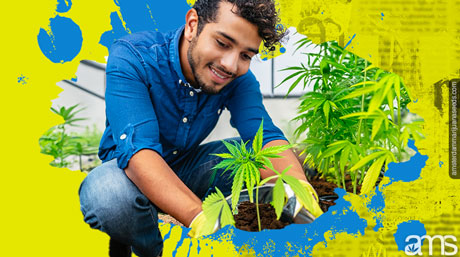
Understanding the Watering Needs of Your Cannabis Plants
The water requirement of cannabis plants varies throughout their life cycle. During the vegetative stage, cannabis plants are growing rapidly, putting out new leaves and branches, hence they need ample water. Regular watering at this stage ensures the plants get adequate moisture to support their vigorous growth.
However, as the plants enter the flowering stage, their water requirements change. They grow slower, and their focus shifts from leaf production to developing buds. Thus, they require less water compared to the vegetative stage. Overwatering during this phase can lead to problems like root rot and fungal diseases, potentially harming your yield.
Understanding these changing needs is essential for successful cannabis cultivation. It’s about achieving a balance – providing enough water for your plants to thrive, but not so much that it leads to detrimental conditions.
Implementing Proper Watering Techniques
When it comes to watering your cannabis plants, the methodology is as important as the frequency. A watering can or a hose attached to the spigot of your rain barrel can be used. However, it’s essential to water your plants slowly and evenly, allowing the water to seep into the soil gradually. This method ensures the water reaches the root zone effectively, promoting healthy root growth and nutrient uptake.
In container gardening, a common technique is to water until a little water comes out of the bottom of the container. This runoff indicates that the water has thoroughly penetrated the soil, ensuring that the roots throughout the pot have access to water. However, it’s important not to let the plants sit in this runoff, as it could lead to oversaturation.
In terms of frequency, cannabis plants typically prefer a cycle of wet and dry periods rather than constant moisture. A common approach is to water the plants thoroughly, then wait until the top inch or so of soil dries out before watering again. This method prevents overwatering while ensuring the plants receive enough hydration to grow healthily.
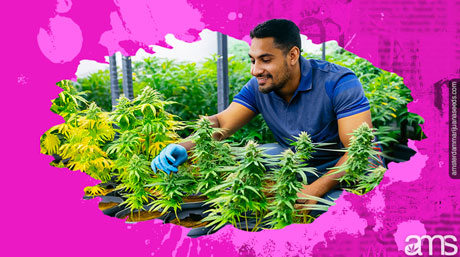
Monitoring Plant Health for Optimal Watering
Observing your plants is a key aspect of effective watering. Signs of overwatering include drooping leaves, yellowing, and a general appearance of being ‘overly lush.’ On the other hand, underwatered plants may also exhibit drooping, but they typically perk up quickly after being watered.
In conclusion, using rainwater for your cannabis plants involves more than merely replacing tap water. It requires an understanding of the plants’ unique water needs at different stages of growth, implementing proper watering techniques, and regularly observing the plants for any signs of distress. With careful attention and practice, using rainwater for cannabis cultivation can significantly enhance your plants’ health and yield, while also contributing to a sustainable and environmentally-friendly gardening practice.
In Conclusion: A Satisfying Cultivation Experience
Embracing rainwater as an irrigation resource for your cannabis cultivation brings about a profound sense of satisfaction. You’re not just nurturing plants; you’re stepping into the realm of sustainable, environmentally conscious gardening practices. The journey from setting up your own rainwater collection system to comprehending the specific needs of your cannabis plants, culminates in the joy of witnessing the fruits of your labor.
This immersive experience not only enriches your understanding of cannabis cultivation, but also fosters a deep sense of pride. You are equipped with practical, hands-on expertise, an asset of immense value in our increasingly eco-aware society. With the availability of rainwater, your homegrown marijuana plants can truly thrive, making your cultivation endeavors rewarding and fulfilling.
As we wrap up our discussion on harnessing rainwater for cannabis cultivation, it’s crucial to remind ourselves of the importance of legality. Always ensure that your cultivation practices comply with local laws and regulations concerning cannabis cultivation. The essence of sustainable cultivation lies in marrying harmony with nature and respect for the law.
In line with our commitment to providing a satisfying and enlightening experience, we recommend checking out Amsterdam Marijuana Seeds. This platform offers a variety of high-quality seeds and an array of cultivation guides. Whether you’re a novice or an experienced cultivator, you’ll find resources tailored to your needs, and seeds that’ll help you begin or continue your sustainable cannabis cultivation journey.
Embrace the green thumb within you, and embark on a responsible and satisfying cannabis cultivation journey.
You may like
-


Buddha Chief raises vibrations at new Housing Works dispensary in NoMad
-


3 best THCA vape carts of 2025 by Leafly
-


From client to co-founder, Storz & Bickel executive on US tour to drum up cannabis business
-


UNDERSTANDING CANNABIS AND CANNABINOIDS (THC and CBD)
-


High Stakes and High Demand: Will Las Vegas Finally Allow Cannabis Near Casinos?
-


Cannabis Tourism in 2025: Destinations, Trends, and Tips
Cannabis
Cannabis And Co2 – How To Increase Your Yield
Published
2 months agoon
December 27, 2024By
admin
Discover Cannabis and CO2
Did you know that your plants can be harmed if they don’t get an adequate supply of CO2? Or that an excessive supply of carbon dioxide can potentially be harmful to your marijuana plants? Carbon dioxide is a crucial aspect of marijuana cultivation that can hinder or permanently halt the progress of plant growth. When it comes to supplying your plants with additional carbon dioxide, there are certain factors you need to keep in mind. In this piece “Cannabis and CO2” we will share ways to optimize CO2 levels for cannabis growth.
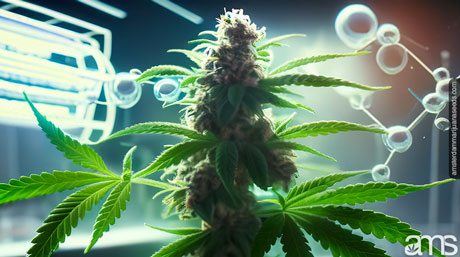
Why is carbon dioxide essential for cannabis cultivation?
It is essential to ensure that your plants receive a carbon dioxide level above 250 parts per million (ppm). Any CO2 level below this measure can pose immense risk to them. On the other hand, exposing your plants to dangerously high levels of carbon dioxide can be lethal. But why is carbon dioxide essential for cannabis cultivation? It enables plants to complete the process of photosynthesis. Photosynthesis is the conversion of carbon dioxide into energy in plants. As the name and formula imply, CO2 consists of one carbon atom and two oxygen atoms. This is significant because plants require 17 essential elements to grow and reproduce, and hydrogen, carbon, and oxygen make up 95% of a plant’s dry weight.
Many farmers suggest that adding CO2 to the cultivation room could improve yields by up to 20%. However, this guide will show you how to optimize carbon dioxide levels for better weed growth and excellent results.
How to introduce additional CO2 to your garden
There are several methods to add carbon dioxide to your garden. However, many of these methods do not guarantee controlled delivery of the desired PPM. Therefore, we recommend investing in reliable equipment to ensure proper CO2 supplementation.
CO2 generators
CO2 generators offer an effective way to improve the carbon dioxide levels in your plants. These products, resembling outdoor heaters, burn propane or natural gas to produce carbon dioxide. They also emit heat, making them suitable for larger spaces and climate-controlled enclosures.
Compressed CO2
Compressed CO2, stored in metal tanks like propane cylinders or scuba tanks, can be delivered to your plants through emitters. Unlike generating carbon dioxide on your own, compressed carbon dioxide is produced at a factory, eliminating concerns about heat generation. This makes compressed CO2 an excellent choice for small-scale growers.
What does carbon dioxide do for your cannabis plants?
Optimizing carbon dioxide levels for your plants will result in increased growth speed and higher yields. With accelerated growth, you can enjoy bountiful harvests every year, resulting in bigger and better yields without experiencing dry periods. When carbon dioxide is used properly, it increases the moisture content in your plants and enhances their resilience. This enables plants to withstand higher temperatures than they normally would without drying out quickly. As a result, your plants will thrive in hotter conditions, leading to improved growth.

Why use CO2 in cannabis cultivation?
There are two primary benefits of using CO2 in your marijuana plants: faster growth and greater yield. Additionally, plants store a certain amount of moisture and energy in their leaves, and carbon dioxide helps release that energy, allowing plants to blossom. Most cultivators agree that unlocking this stored energy can lead to a 20-30% increase in yield, along with a relative growth speed increase of at least 15%.
What do you need to know before adding CO2 to your cannabis plants?
Adding CO2 will increase the humidity of your cannabis garden, creating a more moist environment. However, higher moisture levels can also increase the risk of fungus and rot. Moreover, uncontrolled release of carbon dioxide can create a toxic environment for both your cannabis plants and yourself. A CO2 level of about 2000 ppm can harm your plants, and levels higher than that can be unsafe for animals and humans to breathe. It’s important to remember that a quantity below 250 ppm will harm your plants.
Since carbon dioxide is heavier than oxygen, it needs to rain down on your plants. Therefore, it’s necessary to regulate carbon dioxide levels to maximize its benefits without sacrificing the oxygen your plants require, and vice versa. In a nutshell, carbon dioxide supplementation will lead to bigger, improved, and higher annual yields.
Cannabis Seeds
Compare Indica Vs Sativa: Differences And Benefits Explained
Published
3 months agoon
December 11, 2024By
admin
Indica vs Sativa
Who would have thought that in marijuana there are different types of plants with completely different effects and benefits? The origin, the climate, the effects, and the physical characteristics are crucial in order, to differentiate the type of plant that you are going to use either in the clinical, pharmaceutical, or recreational field, as well as to know between Cannabis Sativa and Cannabis Indica in order, to be able to make the best selection of seeds according to your needs.
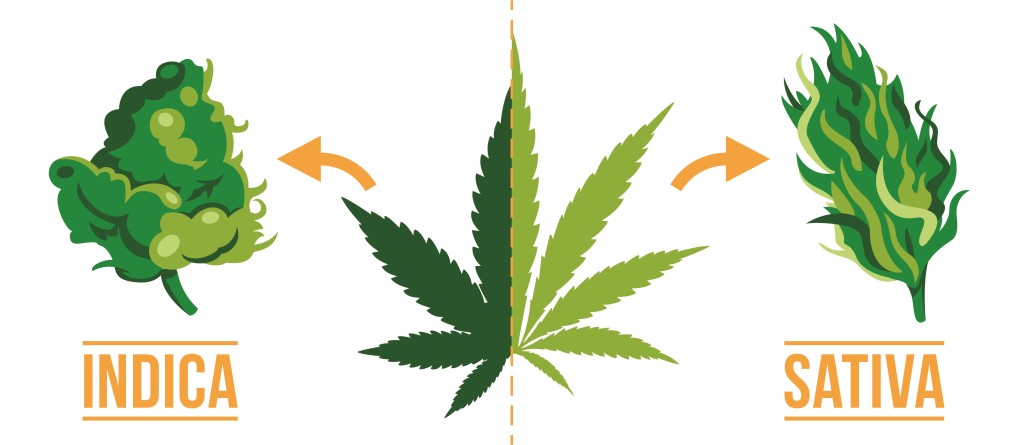
Marijuana is a well-known plant for its mind and body effects and it’s split into two main types: Sativa and Indica. Even though they come from the same family and have similar ingredients, they’re different in how they look and what they do when you use them. Let’s break it down simply:
What the plants look like:
Indica: This plant is short and looks like a bush with wide leaves. It grows well in cooler and mountainous areas.
Sativa: This one is tall and thin, with skinny, pointed leaves, kind of like a young pine tree. It likes hot and humid places.
How they make you feel:
Indica: It chills you out and can make you sleepy, like when you’re getting cozy in bed after a long day.
Sativa: It energizes you and wakes up your mind, great for when you need to do things that require imagination or when you’re hanging out with friends.
To put it simply: if you want to relax, go for Indica. If you want to be more alert and active, go for sativa. We’ll explain more about this soon so you can better understand how each one affects people differently.
The two subspecies of marijuana represent different adaptations to different climates. Sativa originates from the jungles of equatorial regions such as Thailand, Cambodia, Jamaica, Colombia, and Mexico, places that enjoy long hours of sunshine and constant light throughout the year. The Indica variety, on the other hand, comes from the Hindu Kush region, a vast mountain range of more than 800 kilometers that stretches from Afghanistan to China and is characterized by a very cold climate.
Climatic and physical characteristics
Cannabis Sativa is known for its ability to adapt to the heat of tropical climates, being resistant to low temperatures and showing an effective ability to prevent the growth of fungi commonly associated with humidity. Indicas, on the other hand, originate from mountainous climates, which enables them to withstand climatic challenges such as wind, rain, and frost.
Morphology and appearance:
Morphology of Cannabis Sativa
Cannabis Sativa plants, are distinguished by their unique morphology and appearance, which tend to be taller and more slender, with long, thin leaves, differentiating them from other marijuana species such as Indica and Ruderalis. The following points highlight the main morphological and appearance characteristics of Sativa:
- Height and Structure: Cannabis sativa plants are typically tall and slender, with some varieties reaching heights of up to 20 feet (about 6 meters) under optimal conditions. They have a more open structure compared to the bushier Cannabis indica, allowing for greater light penetration throughout the plant.
- Leaves: The leaves of Cannabis sativa are characteristically long and narrow with a light green color. They possess serrated edges and are composed of slender leaflets that are spread far apart. The number of leaflets can vary, usually between 5 to 13 per leaf.
- Branching: Sativa plants have less dense branching compared to their indica counterparts, with branches extending outward and upward, giving the plant an airy appearance. This less compact structure is beneficial for air circulation and can help in reducing the risk of mold and fungal diseases in humid environments.
- Flowers (Buds): The flowers of Cannabis sativa are elongated and less dense than those of indica plants. They tend to be more “fluffy” or airy and can appear on the plant as spaced, apart clusters. The flowering period for sativa strains is generally longer, often taking between 10 to 16 weeks to fully mature.
- Trichomes: While both sativa and indica plants produce trichomes (the resinous glands containing cannabinoids), the concentration and distribution can vary. Sativa plants typically have a high concentration of trichomes on the flowers and surrounding foliage, contributing to their potent therapeutic and psychoactive properties.
- Root System: Cannabis sativa plants develop a deep taproot system, which enables them to access water from deeper soil layers. This characteristic is beneficial for plants growing in arid conditions, allowing them to thrive where other plants might not.
- Growth Pattern and Maturation: Sativa strains usually have a longer vegetative growth phase, which contributes to their tall stature. Their extended flowering time requires patience but can result in high yields of marijuana flowers.
Cannabis sativa strains are often associated with a cerebral, uplifting high, attributed to their higher concentration of THC in comparison to CBD. This makes them particularly popular for daytime use. The distinct morphology and appearance of sativa not only contribute to its cultivation requirements but also influence its effects and applications, making it a fav
Morphology of Cannabis Indica
Cannabis Indica plants have distinctive morphological traits, shorter and more compact appearance, with wider and denser leaves, traits that differentiate from Sativa and Ruderalis. The main characteristics of Indica are described below:
- Height and Structure: Cannabis indica plants are generally shorter and bushier than their sativa counterparts, typically reaching heights of 2 to 4 feet (about 0.6 to 1.2 meters). They have a compact, dense structure, which makes them well-suited for indoor cultivation.
- Leaves: The leaves of Cannabis indica are broad and dark green, with fewer but wider leaflets compared to sativa plants. Indica leaves often have between 7 to 9 leaflets, which are closer together, giving the leaf a fuller appearance.
- Branching: Indica plants have dense branching, with closer internodal spaces. This compact growth habit results in a bushy appearance and contributes to their ability to produce more buds in a smaller space.
- Flowers (Buds): The buds of Cannabis indica plants are typically dense, thick, and bulky, clustering around the plant’s nodes. Due to the plant’s compact nature, these buds are often heavier and more resinous than those of sativa strains, leading to higher yields per square foot in controlled environments.
- Trichomes: Cannabis indica plants are known for their abundant trichome production, which covers the buds and surrounding foliage in a thick layer of crystalline resin. This resin is rich in cannabinoids like THC and CBD, making indica strains highly potent.
- Root System: Indica plants have a more spread-out root system compared to the deep taproot of sativa plants. This characteristic makes them more adaptable to various growing mediums and efficient in nutrient uptake from the soil.
- Growth Pattern and Maturation: Cannabis indica strains have a shorter vegetative growth phase and a faster flowering cycle than sativa strains, often maturing in 6 to 8 weeks. This quick turnaround makes them attractive to cultivators looking for a fast crop.
- Effects: Indica strains are traditionally associated with a sedative, body-centric effect, often referred to as a “body high.” This makes them popular for evening use, providing relaxation and aiding in sleep.
The morphology and appearance of Cannabis indica are not just significant for identification; they also have practical implications for cultivation and use. The compact, dense growth of indica plants makes them particularly suited for indoor or space-constrained environments. Their potent, resinous buds are favored for their strong therapeutic effects, offering relief from pain, anxiety, insomnia, and more.
Chemical and Psychoactive Composition
Both subspecies contain a variety of chemical compounds, but the proportions of these compounds can vary.
Cannabis Sativa: Sativas tend to have higher levels of tetrahydrocannabinol (THC), the compound responsible for the psychoactive effects. They may also contain significant amounts of cannabidiol (CBD), which has health properties, but in lower proportions than THC.
Cannabis Indica: Indicas generally have slightly lower THC levels than Sativas, but can still be potent. They tend to have a more balanced ratio of THC and CBD, which can result in a more relaxing and sedative effect.
When it comes to psychoactive effects, it is important to remember that although both Sativa and Indica contain THC, the effects and reactions vary greatly depending on the type of plant.
So which strain is right for me? Amsterdam Marijuana Seeds can tell you:
Sativa is known for its properties that induce a state of euphoria and greater sociability compared to the Indica variety. This sub-species enhances perception, intensifying the appreciation of colors and sounds while stimulating creativity and thinking. Sativa is used to relieve stress, anxiety, depression, nausea, migraines, and as an appetite stimulant, among other wellness benefits.
On the other hand, Indica, known for its relaxing and sedative properties, is highly effective in the treatment of insomnia and a variety of conditions. It is widely used to alleviate neuromuscular disorders such as tremors and, spasms, and to combat chronic pain. It is also a valuable option for reducing anxiety and stress and stimulating appetite in patients who need it.
Alternative uses
Cannabis Sativa: Sativas are often used to treat depression, anxiety and to improve mood. They can also be useful in treating attention deficit disorder and stimulating appetite.
Cannabis Indica: Indicas are preferred for the treatment of chronic pain, insomnia, anxiety and to relax tense muscles. They are also commonly used to treat gastrointestinal disorders.
It is important to note that due to hybridisation and genetic variability of marijuana strains, classification as sativa or indica is not always accurate. In addition, individual experience with these subspecies may vary between individuals and specific strains.
Sativa and Indica are two subspecies with marked differences in morphology, chemical composition, psychoactive effects, and alternative uses. The choice between one or the other depends on the personal preferences and therapeutic needs of each individual.
Cannabis Seeds
Marijuana Seed Varieties For Cultivation
Published
3 months agoon
December 8, 2024By
admin
CBD Seeds
CBD marijuana seeds share characteristics with feminized, regular, or autoflowering varieties, but are distinguished by their higher CBD content compared to conventional varieties. Additionally, in many cases, the aim is to minimize the THC level so that they can be used for medicinal purposes.
However, these seeds never contain the adequate concentration of THC for use in legal CBD product production, which currently must be below 0.2%. For this purpose, hemp seeds are used. Despite this, CBD marijuana seed varieties still offer more relaxing and stress-relieving effects than other varieties.
Hemp Seeds
Unlike CBD seeds, hemp seeds always contain THC levels below 0.2%, ensuring a predominance of CBD. Also known as industrial hemp, this variety is used for CBD extraction and the production of therapeutic products. However, the CBD levels obtained from hemp never reach those achieved with CBD seeds.
Hemp seeds are not only used for obtaining cannabidiol but also for extracting strong fibers used in various industries, such as textile, paper, insulation, rope manufacturing, fuel, paints, cosmetics, among others. Additionally, hemp seeds are edible and can be consumed as oil, whole, raw, toasted, or ground into flour.
Fast Version Seeds
Like CBD marijuana seeds, Fast Version seeds have similar characteristics to regular or feminized varieties, but their life cycle is shorter than usual, allowing for harvesting before the first October frosts.
Indeed, many of these types of seeds can be combined. Sativa, indica, hybrid, or ruderalis varieties can be presented in feminized, regular, autoflowering, or Fast Version forms. Hemp seeds, on the other hand, belong to the sativa group.

Buddha Chief raises vibrations at new Housing Works dispensary in NoMad

3 best THCA vape carts of 2025 by Leafly

From client to co-founder, Storz & Bickel executive on US tour to drum up cannabis business

UNDERSTANDING CANNABIS AND CANNABINOIDS (THC and CBD)

High Stakes and High Demand: Will Las Vegas Finally Allow Cannabis Near Casinos?

Cannabis Tourism in 2025: Destinations, Trends, and Tips

The Rise of Cannabis in Florida

Woody Harrelson Wishes He Could Invite Bob Marley To His Marijuana Dispensary—But Fears The Reggae Legend Would Out-Smoke Him

America is Rethinking Marijuana Legalization

Karma Koala Podcast 234: Tom Church Litigator, Atlanta. Georgia is notorious on the law enforcement front….. “Our Firm Gets Charges Dismissed in Delta-8-THC Prosecution”

Distressed Cannabis Business Takeaways – Canna Law Blog™

United States: Alex Malyshev And Melinda Fellner Discuss The Intersection Of Tax And Cannabis In New Video Series – Part VI: Licensing (Video)

What you Need to Know

Drug Testing for Marijuana – The Joint Blog

NCIA Write About Their Equity Scholarship Program

It has been a wild news week – here’s how CBD and weed can help you relax

Cannabis, alcohol firm SNDL loses CA$372.4 million in 2022

A new April 20 cannabis contest includes a $40,000 purse

Your Go-To Source for Cannabis Logos and Designs

UArizona launches online cannabis compliance online course
Trending
-

 Cannabis News2 years ago
Cannabis News2 years agoDistressed Cannabis Business Takeaways – Canna Law Blog™
-

 One-Hit Wonders2 years ago
One-Hit Wonders2 years agoUnited States: Alex Malyshev And Melinda Fellner Discuss The Intersection Of Tax And Cannabis In New Video Series – Part VI: Licensing (Video)
-

 Cannabis 1012 years ago
Cannabis 1012 years agoWhat you Need to Know
-

 drug testing1 year ago
drug testing1 year agoDrug Testing for Marijuana – The Joint Blog
-

 Education2 years ago
Education2 years agoNCIA Write About Their Equity Scholarship Program
-

 Cannabis2 years ago
Cannabis2 years agoIt has been a wild news week – here’s how CBD and weed can help you relax
-

 Marijuana Business Daily2 years ago
Marijuana Business Daily2 years agoCannabis, alcohol firm SNDL loses CA$372.4 million in 2022
-

 California2 years ago
California2 years agoA new April 20 cannabis contest includes a $40,000 purse



